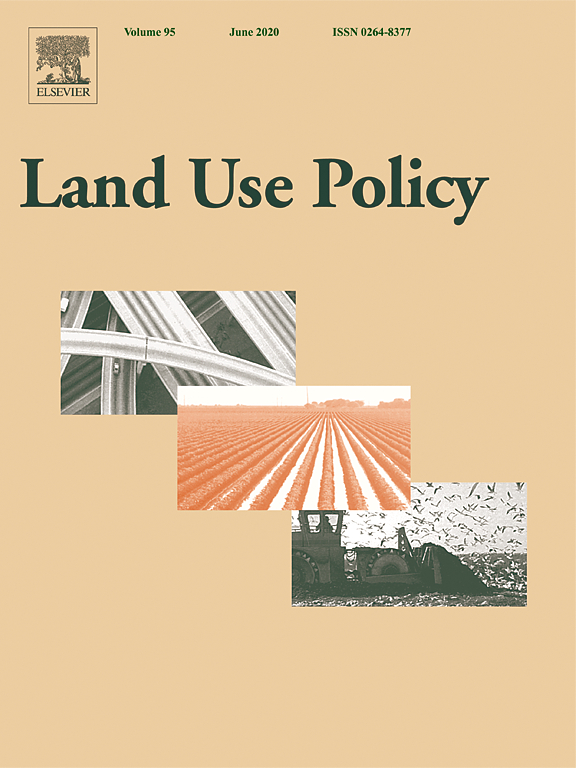Location
Land Use Policy is an international and interdisciplinary journal concerned with the social, economic, political, legal, physical and planning aspects of urban and rural land use. It provides a forum for the exchange of ideas and information from the diverse range of disciplines and interest groups which must be combined to formulate effective land use policies. The journal examines issues in geography, agriculture, forestry, irrigation, environmental conservation, housing, urban development and transport in both developed and developing countries through major refereed articles and shorter viewpoint pieces.
Land Use Policy aims to provide policy guidance to governments and planners and it is also a valuable teaching resource.
ISSN: 0264-8377
Members:
Resources
Displaying 216 - 220 of 279Of mice and men: Why the unintended consequences of carbon markets matter
Land tenure remains one of the most critical factors determining equity under REDD+, as we demonstrated through our previous article, ‘Roots of inequity: how the implementation of REDD+ reinforces past injustices”. Githiru responded to this paper, with some apparent challenges to both the empirical basis and theoretical arguments, that we had put forward.
Neo-spaces for urban livability? Urbanites’ versatile mental images of green roofs in the Helsinki metropolitan area, Finland
Within the context of enhancing sustainable and livable urban environments, one aim is to establish multifunctional green infrastructure (GI). We argue that in order to successfully plan and manage the development of GI, an inclusive and future-oriented stance concerning the needs and expectations of urbanites is required. By using green roofs as an example, the aim of this paper was to offer insights into how people envisage novel GI in urban environments and to reveal the scope of meanings and values people attach to these kinds of green infrastructure.
Sustainable crop intensification through surface water irrigation in Bangladesh? A geospatial assessment of landscape-scale production potential
Changing dietary preferences and population growth in South Asia have resulted in increasing demand for wheat and maize, along side high and sustained demand for rice. In the highly productive northwestern Indo-Gangetic Plains of South Asia, farmers utilize groundwater irrigation to assure that at least two of these crops are sequenced on the same field within the same year. Such double cropping has had a significant and positive influence on regional agricultural productivity. But in the risk-prone and food insecure lower Eastern Indo-Gangetic Plains (EIGP), cropping is less intensive.
Local impacts of industrial tree plantations: An empirical analysis in Indonesia across plantation types
The values ascribed to industrial tree plantations are often controversial. Hence knowledge of their perceived impacts is important for improving their integration in rural landscapes. In 2016 we conducted household surveys with 606 respondents living in villages adjacent to acacia, teak and pine plantations across three islands in Indonesia (Java, Borneo, Sumatra). Results show that perceptions toward pine and teak plantations tend to differ from those toward acacia pulpwood plantations in several ways.
Coping with resettlement: A livelihood adaptation analysis in the Mekong River basin
A major driver of change in the Mekong River basin relates to hydropower development and the consequent changes in landscape and natural resource access regime that it induces. In this paper, we examine how the livelihoods of resettlers evolve following resettlement, and examine the determinants of that process. The study takes place in the context of the Theun Hinboun Expansion Project in Lao PDR. Based on longitudinal household surveys conducted before resettlement as well as 1, 2, and 3 years after resettlement, we identify the process of livelihood adaptation in resettled communities.



